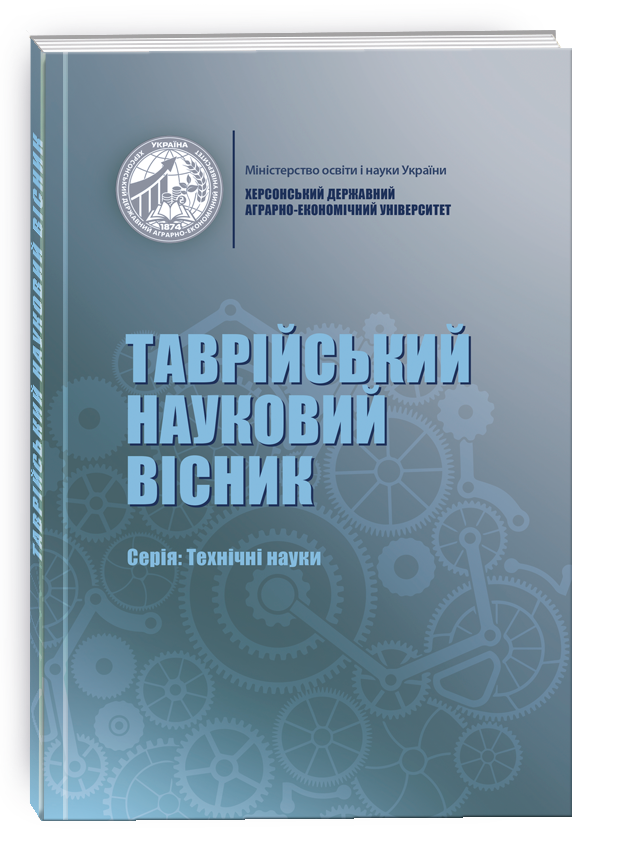UTILIZATION OF NUTRIENT-ENRICHED INGREDIENTS IN RYE BREAD PRODUCTION
DOI:
https://doi.org/10.32782/tnv-tech.2025.1.28Keywords:
rye bread, unconventional raw materials, functional ingredients, lentils, dried apricots, stevia, spirulinaAbstract
The bakery industry faces challenges related to changing consumer priorities. The modern market demands bakery products with improved properties, including functional foods, low- calorie options, products with increased protein, fiber, and vitamin content, as well as those adapted to specific dietary needs. There is a growing interest in natural ingredients and environmentally friendly technologies that contribute to reducing added sugar, salt, and artificial additives. Additionally, the social accessibility of bakery products remains an important factor.The subject of this study is the technological aspects of using high-nutritional-value ingredients (red lentil flour, dried apricots, stevia, and spirulina) in the production of rye bread.The research focuses on improving the nutritional value, reducing caloric content, and adapting bakery products to meet modern consumer demands.The aim of this study is to enhance the nutritional value, improve quality, reduce caloric content, and adapt rye-based bakery products to contemporary consumer requirements.The research has established that incorporating red lentil flour, dried apricots, stevia, and spirulina improves the nutritional value of rye bread. Lentils contain high levels of protein, polyunsaturated fatty acids, and B vitamins. Dried apricots are rich in potassium, magnesium, and fiber, which contribute to cardiovascular and digestive health. Stevia, as a natural sweetener, helps reduce added sugar content. Spirulina is a source of proteins, minerals, and antioxidants that strengthen the immune system and provide antioxidant effects.The inclusion of these components in bread formulations enables the production of nutritionally valuable bakery products adapted to modern consumer needs. The use of unconventional ingredients in bakery products contributes to the creation of products with improved characteristics that meet contemporary consumer demands and help reduce the risk of chronic diseases.
References
Дзюндзя О. В., Звагольська К. М. Аналіз нетрадиційної борошняної сировини для виробництва хлібобулочних виробів. Таврійський науковий вісник. Серія: Технічні науки. 2021. № 1. С. 22–29. https://doi.org/10.32851/tnv-tech.2021.1.4.
Миколенко С. Ю., Омельченко М. Ю. Використання диспергованого зерна спельти для виробництва хліба. Вісник аграрної науки Причорномор’я. 2020. Вип.1. С. 110–120. https://doi.org/10.31521/2313-092X/2020-1(105).
Денисова Н. М., Зінюк М. О., Буяльська Н. П. Використання добавок безглютенового борошна технології виробництва хлібобулочних виро- бів. Технічні науки та технології. 2019. № 3 (17). С. 237–240. https://doi. org/10.25140/2411-5363-2019-3(17)-234-240.
Іоргачова К. Г., Лебеденко Т. Є. Хлібобулочні вироби оздоровчого призначення з використанням фітодобавок: монографія. Київ: К-Прес, 2015. 464 с.
Науменко О., Чиж В. Біотехнологічні показники хлібопекарських заквасок (Огляд літератури). Продовольчі ресурси. 2022. № 10 (19). С. 107–115. https://doi. org/10.31073/foodresources2022-19-12.
Жемела Г. П., Баган А. В., Бараболя О. В., Шакалій С. М., Чайка Т. О. Екологізація випікання пшеничного хліба з використанням хмелевих заквасок і спіруліни. Scientific Progress Innovations. 2020. № 1. С. 100–106. https://doi.org/10.31210/ visnyk2020.01.11.
Челябієва В. М., Соседова К. Ю. Використання заквасок спонтанного бродіння та борошна бобових культур у виробництві хліба. Технічні науки та технології. 2021. № 3 (13). С. 251–257. https://doi.org/10.25140/2411-5363-2018-3(13)- 251-257
Сапотніцька Н., Кучерук Н. Іноземний та вітчизняний досвід екоупакування для хліба та борошняних виробів як екологічна стратегія підприємства. Підприємництво та інновації. 2022. № 22. С. 47–53. https://doi.org/10.37320/2415-3583/22.8
Новікова Н. В., Проценко Г. Ю., Харченко К. В. (2024). Аналіз сировини для розробки новітнього українського житнього хліба з покращеною рецептурою. Таврійський науковий вісник. Серія: Технічні науки. 2024. (2). С. 161–166. https://doi.org/10.32782/tnv-tech.2024.2.18
Megan Ware. Natalie Butle. Nutritional value of lentils. MedicallNewsNoday. URL: https://www.medicalnewstoday.com/articles/297638
Курага – користь і корисні властивості. Вей-сайт компанії «Скарбниця здоров’я»: https://fitoskarb.com.ua/index.php/ua/ru/consultations/118-kuraga-korist-i- korisni-vlastivosti-shkoda-kuragi. (дата звернення: 02.01.2025).
Роїк М. В., Кузнєцова І. В, Захаревич В. Б. Виробництво і використання стевії (Stevіa rebaudіana Bertonі) у світі. Наукові праці Національного університету харчових технологій. 2015. Т. 21, № 1. С. 202–207.
Стевія: користь і шкода для організму. Стевіясан: https://steviasun.com.ua/ blog/steviya-polza-i-vred-dlya-organizma/. (дата звернення: 02.01.2025).
Спіруліна. Інтернет ресурс. Фармацевтична енциклопедія України. https:// www.pharmencyclopedia.com.ua/article/619/spirulina. (дата звернення: 02.01.2025).







